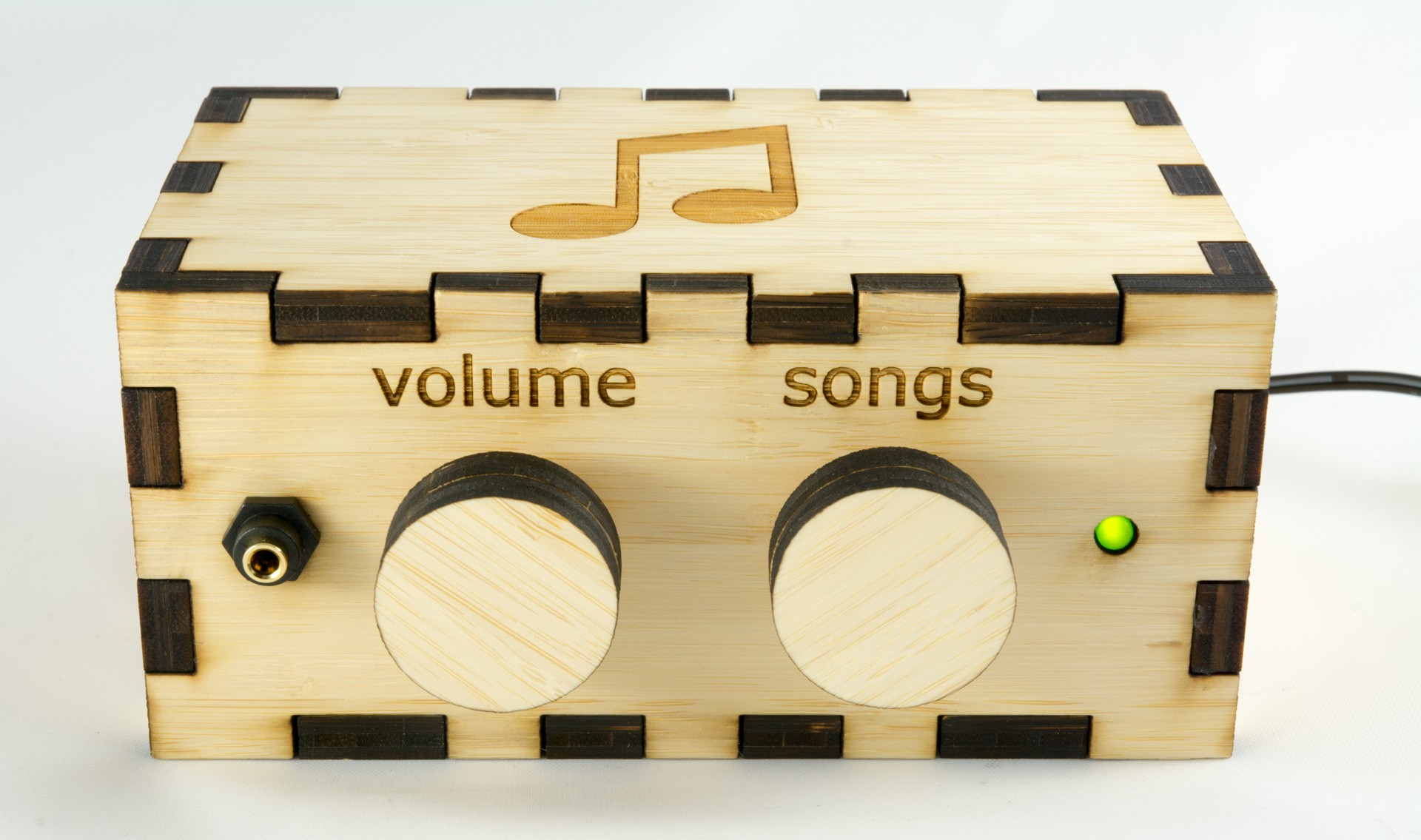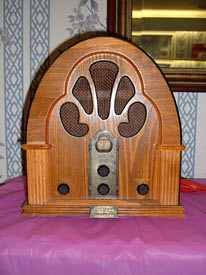Why is this music player dementia-friendly? I get that question from people that don't know anyone with dementia. Those of you that know someone with dementia probably already know why -- because it leverages the old strong memories. In other words, because it is retro. More specifically because it operates like a 1940s era two knob radio. And those memories from youth are often the last to go.
So I thought I'd experiment with going more retro. There isn't enough time left in this challenge to change the production model. But there is enough time to experiment. For clarity, the production model is ready for you to build now and I'm not going to make any major changes in the next few weeks. So what you see below is the direction that I might go later.
This is the current production model:

This is a 1932 cathedral-style radio (courtesy of Broken Sphere / Wikimedia Commons) , which I think is iconic and thus usefully retro:

Creating a cathedral-style music player would be more expensive and more complex. I look forward to that challenge e.g. learning things like laser cutting a living hinge to follow that cathedral curve. My suspicion is that it would increase the cost of parts, and I want to keep the project financially accessible for makers. So I thought I'd experiment with something simpler:

I added vertical engravings to mimic the look of frequency gradations on a radio dial. And there is a long horizontal cut that I was hoping to backlight, again to mimic a radio dial. Alas, I couldn't get an effective backlight without violating my rule of no soldering (another way of keeping the project accessible to lots of makers). My favorite part of this is the greater separation of the knobs - I think that makes it look a bit more like a 1940s radio. My least favorite part is that I had to move the headphone jack to the side.
Ultimately, I decided that if I'm going to go more retro, I'm going to go all-in and aim for the cathedral style.
The next project log will be about the one small tweak that I'm making to the production model.
 Ross Porter
Ross Porter
Discussions
Become a Hackaday.io Member
Create an account to leave a comment. Already have an account? Log In.